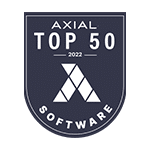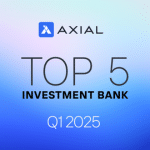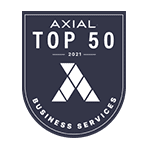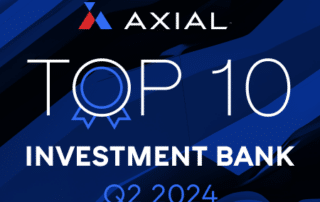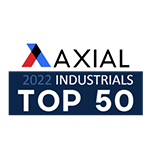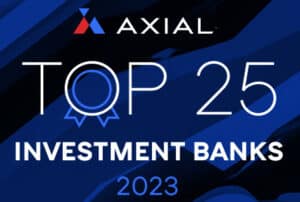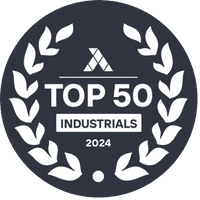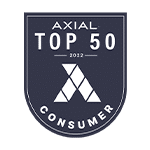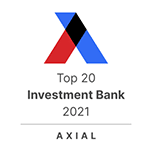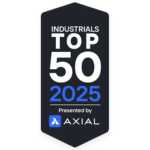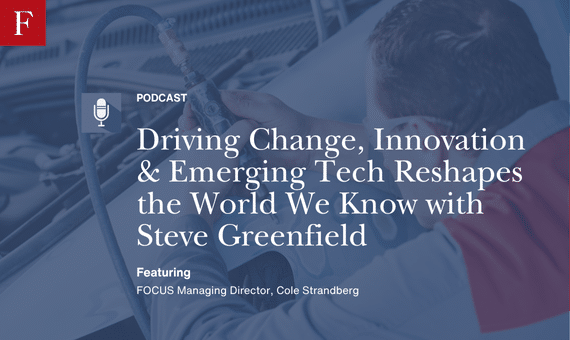
Driving Change, Innovation & Emerging Tech Reshapes the World We Know with Steve Greenfield
On this week’s episode, Cole Strandberg chats with Steve Greenfield, CEO of Automotive Ventures, author of some fantastic books and publications that they discuss in the show, and a leading thinker on how innovation is shaping the way we move, own, and repair vehicles. In this episode, they’ll step back from the day-to-day of collision repair and take a big-picture look at the future — EV adoption, autonomous vehicles, emerging technologies, and how all of this change is reshaping the entire ecosystem. This is a broader, more all encompassing conversation than our normal collision repair specific talks but we know you will gain a lot of great insights.
Listen and Follow The Collision Vision.
Cole Strandberg: This is going to be a very different conversation than we normally had, but I think it’s going to be so valuable, so insightful. It’s one that I’m personally very much looking forward to. Before we dive in, I’ve studied up on you. I’ve followed you for a long time. I have some of the books that we’ll talk about later on on my phone in my Kindle app right now. Big fan but would love to have you introduce yourself in your own words.
Steve Greenfield: Yeah. Short story with me is, you know, I grew up in Toronto 25 years mostly in automotive related marketplaces. Manheim, the largest auction company in the world, Autotrader, which at that time was the largest classified automotive site in the world, and then most recently at TrueCar out on the West side of LA. Most of that time has been overseeing strategy and acquisitions. And then maybe most relevantly for today’s conversation, five years ago decided to pivot my career pretty dramatically into becoming a venture capitalist. So we’re on our third fund. We’ve made 42 investments in 4 1/2 years. So we’re on a good pace of about 10 investments a year. We’re hunting down the best entrepreneurs on the face of the planet who are, you know, chasing Dragons, right? Going after really big problems they’re trying to solve in the mobility across the mobility spectrum, trying to invest, find them as early as possible, to invest as early as possible, and then activating our network to help them grow as quickly as possible.
Cole Strandberg: Awesome story, super unique background, and I think it lends itself very well to talk about a lot of the hottest topics in and around the collision repair industry, certainly in the broader automotive and mobility you’ve been called, I’ve read it. I would echo this sentiment, one of the most influential voices in mobility. But let’s start there. How would you define mobility in today’s world?
Steve Greenfield: Yeah, great, Great question. Because different folks define it different ways. We we quite, quite simplistically say if you’re moving humans or cargo across the modalities of land, sea, air or space, that’s kind of how we think of. So think of that 2 by 4 matrix. That’s how we think of mobility. And then within that, obviously there’s a lot of nuances, but at A at a high level, that’s sort of how we see the mobility spectrum, which includes a lot of stuff.
Cole Strandberg: Love it. Fantastic, super helpful. We talked a little bit about before we hit record the definitions of automotive and mobility. So I think that’s helpful in in painting the picture here. I want to dive deeper later in our conversation into the books as I referenced, but in your book The Future of Mobility, you describe a fundamental shift in how people move and how vehicles fit into that. What are some of the key themes there you can share with us today?
Steve Greenfield: Yeah, I mean, it’s hard to get down into a couple of sentences. I mean, given the pace of change. But you know, the the way that we’ve kind of moved humans in cargo for the last 100 years has been dramatic, right? We had the industrial revolution, who who knows, 100 years ago, we weren’t flying planes around, right? But, you know, the way that we move today, though has been static for some time, but the pace is increasing. So pick up any publication and literally every every day we’re seeing something on Elon Musk, either with, you know, electrification of vehicles or trying to colonize Mars. You know, we see movements towards hydrogen and ammonia as alternative fuels. We see, you know, the, the autonomy, you know, with Waymo, I’m here in Atlanta and they’ve mapped the city now and they’re starting to offer Waymo rides in Atlanta. And it’s, it’s eerie the first time you hop in one of these autonomous vehicles, but, you know, but 30 seconds or a minute in, you’re like, wow, this thing’s really making good decisions. And as a result, I’m really comfortable. So, you know, it’s very interesting. I, I, I think we’ll, we’ll hopefully the, the future will prove that we’re at a good time to be investing because it’s kind of an inflection point across many of these sort of modes of transportation right now, not the least of which is autos. I’m not sure we’re going to dig into it, but you know, the, the automobile itself is getting much more sophisticated, a lot more technology. And as a result, it’s becoming a lot more complex to repair these things. And there are a bunch of downstream implications from that. So I’m very, very excited to be where we are. I’m thankful that this pace of change, which can be intimidating to some folks, to me is exhilarating and I think it’s a great time to be trying to pick the winners for the future.
Cole Strandberg: I’m happy you said that because the innovation in our space is happening at just this level and pace that makes your head spin and you know it. It is tempting to be scary. It is tempting to look at all the challenges that this innovation creates, but there’s opportunities there as well. What do you view some of the biggest forces driving innovation today? Why is it happening?
Steve Greenfield: Yeah. I mean, I, the context is good because, you know, the way that we’ve kind of sold vehicles and the service vehicles has been pretty static for the last 100 years, right? The, the way the actual retail process for a Ford Model T as they roll off the production line isn’t that different than selling a vehicle today. So it’s, it’s sort of shocking in some ways. I think humans have this frailty where there’s like this recency bias, right? We think that we look at the recent past and we think that’s the way things are going to be in the future. And right now that that that’s a a bad weakness. I think in our decision making. To answer your question, I think what’s happening is that we had a confluence of a bunch of new technologies, right? Battery technology, well, sort of like hasn’t been the breakthrough that some had expected a couple years ago is sort of like on a March forward. We’re hearing out of China that we’ve got now solid-state batteries that can accept a 5 minute charge and go over 1000 miles. When these technologies trickle down to the average consumer in the US, I think EVs become a viable alternative for many cases against, you know, ICE vehicles. I think that we’re seeing more technology in the car. So the car is ironically enough for getting more expensive and more complex, but a lot safer. Forget it. Full autonomy, even just like driving assistance, ADAS, right now, the cars are a lot safer. And that means it’s like the, the, the, the actual percentage of vehicles that are in an accident is going to continue to drop and they’re going to be very safe. You’re going to be able to get in a car, it’s going to effectively to protect itself. And then, you know, you talk about autonomy too. I mean, you know, we were 1015 years too early in terms of calling full autonomy and widespread adoption, but we’re seeing evidence of that right now. So and then not to mention even I’m sure we’ll get into AI as well today. That AI unlocks a lot of efficiencies. You know, we’ll be able to design cars cheaper, manufacture vehicles cheaper, potentially 3D print, you know, the, the, the, the, the components on a vehicle for the aftermarket, like in real time as needed. So, you know, all all of these technologies, to your point, can be pretty intimidating. But at the same time, it’s pretty exhilarating that we’re seeing this sort of like confluence of all these technologies, which is unlocking all kinds of potential.
Cole Strandberg: There’s never been a better time to be in and around this industry. I think the opportunities moving forward with all this change are gonna be tremendous. Before we hit record, we talked about holding each other accountable to where we don’t go down too many rabbit holes. But I’m gonna lead us off going down a rabbit hole. Right off lead.
Steve Greenfield: Away, my friend, Lead away.
Cole Strandberg: You mentioned kind of the dealership model and I, I wanna talk about this ’cause that’s a personal space that that intrigues me a ton and not a whole lot of innovation there. What do you think the dealer of the future looks like 10 years from now? Do we think we’re going to see some rapid change here in that in that time frame?
Steve Greenfield: What’s funny, I mean, this is kind of the world that I’ve been most adjacent to for the last 25 years. And you know, three times in my history, my 25 year career here, the dealers were going to get disrupted, right? First it was going to be the Internet and why, why wouldn’t people just buy online? Well, that didn’t happen, you know, and then we had the rise of Carvana and Carvana was going to disrupt and everyone was going to use this online Click to buy driveway delivery solution. And it’s still a very small percentage of all used cars sold. And then we had COVID, right? And COVID was going to not only drive all of us to go buy cars and have them delivered to our homes, but then the automakers looking at the Tesla model, they were going to sell directly and totally disintermediate the dealer. Well, none of it’s happened, right? 99 point something percent of all cars in America are still bought from dealerships face to face, despite the fact there’s all this enabling technology. So it’s a very complex deal, right? So you’ve got like a trade in. I don’t know whether or not I can get the thing financed and what my credit score implications are going to be and whether I’m going to qualify for incentives. And then I got to negotiate the price of the car. And then I want to go in there and get social proof that this dealer’s trustworthy because I may service my car there. So it’s it’s and it’s the second largest investment after a home that people typically make in their lifetime. So it’s fraught with all kinds of emotion. And I think that the dealer model has been eerily defensive, defensible during all of that. So I think maybe it’s not the answer you want to hear, but I do think 10 years from now, we’re effectively buying cars kind of the same way. It’s from franchise dealer. What we’re buying is the bigger question. You know, I think that dealers will offer mobility services and whether that’s a monthly subscription, whether that’s an EV or it’s powered by hydrogen or whatever, it’s powered by whether the car is partially or fully autonomous. I do think it’s likely that we’re going to be buying cars. Now, the one exception I’ll say is like as autonomy drives down the cost per mile for ride hailing, Ubers lifts. I do think that folks that are in like very dense urban urban metros, like I’m an example, I’m in Atlanta and you know, most of my trips are back and forth to the airport. It’s 2015 minutes or 30 minutes depending on traffic. Would I ever not have a car? Well, if the cost per mile is low enough and I can literally summit a car every time I need through an application on my phone, maybe. And I think that, you know, folks in dense urban areas might switch from car ownership to ride hailing if autonomy hit. It’s drives down costs and it’s convenient and ubiquitous. Possibly. I don’t think that’s going to disrupt the volume of new cars sold every year. You know, Americans still love their their new cars and love to have, you know, it’s a it’s a rite of passage to own a car. It’s a status symbol. I don’t think that’s going to change, you know, with the next in the next generation. But you could see a substitute where if the cost per mile goes down enough, folks may just say, I don’t need a car anymore. I’d rather just like summon a car when I need it.
Cole Strandberg: No doubt. I know it’s, it’s so ingrained into our culture and and Americana having your car, having your truck, whatever it is. But so many things are changing here and, and it’s a great segue. You mentioned the defensibility and kind of the long standing nature of the dealership model. Alternatively, what are some sectors that are are changing super quickly and might be a little bit more agile in in adapting to that? You mentioned ride hailing and ride sharing, autonomous things like that. What are you looking at today?
Steve Greenfield: Yeah, so let’s talk a little bit about sort of like the the aftermarket, right, servicing vehicles and even the collision repair area. It’s very interesting and dynamically changing very quickly as well. Four years ago, if we were having this conversation, I’d be like, you know, there’s a a good chance that EVs are going to, you know, get rapid adoption and then the service intervals are a lot longer, right? They aren’t coming in for oil changes or changing belts or whatever. You talk to many EVs owners and if they haven’t got, you know, recalls on the cars then and they aren’t really bringing them in for service other than to get tires, you know, once every couple of years. So the cost of ownership is less. And that was freaking dealers out. They’re like, oh, you know, I’m not going to see the consumer nearly as much and they aren’t going to be spending them as much. Well, you know, 1 EVs haven’t had the adoption. And two, I think that the EVs did have a lot of like first generation EVs had a lot of recalls. So dealers were busier than ever. I think that as you look at so that would, that would be #1 right. If EV adoption does happen, you got to worry about that. But I think that the other thing that’s happening is the cars are getting more complex. And as a result of that, you know, I think we’re going to see more loyalty than ever of consumers bringing their cars back to their franchise dealer to get the work done. Not because of right to repair acts. I mean, the independent repair shops are still going to get access to the telematics and codes off of the cars and the schematics of the car so they’ll know how to repair them. But think about it, where do you take your iPhone to get fixed? If there’s a problem, you take it to the Apple store. And why that is, is you made an investment like iPhones are 1300 bucks now and you know, you made a significant investment and like, I wouldn’t trust anyone but the Apple Store to work on that, that, that, that phone. So I think that consumers as the technology becomes more sophisticated, are going to go back to their franchise dealer to get the work done more than they are done before. And then there’s the collision repair, like the same dynamics playing out where you’ve got cars that are much more sophisticated, a lot more technology, which is really, you know, disrupting the insurance providers to try to figure out how on earth do I write a premium on this vehicle that’s built, being built in a way where many of the components aren’t, are not repairable. They have to be replaced. You know, we’ve got a shortage of technicians for the maintenance of cars as well as the repair of vehicles. And I think the same dynamic will play out, right? The OEMs will have such sophisticated technologies within their cars that it’s gonna be very hard for the independent repair shops to keep up and stay abreast of all these OEM certifications, the specialized technician skill needed and the specialized tools that are going to be needed OEM by OEM to work on these cars. So again, that can create a lot of anxiety, but I think there’s a lot of opportunity for new entrepreneurs who are really innovating in this space.
Cole Strandberg: Speaking my language, Steve, 2 points to that. We’ve seen over the past decade the number of body shops decreasing, even though the overall size and revenue and scope of the industry is increasing. It’s expensive to fix cars now, and it’s even more expensive to fix them, right? And that’s why you can see the two sides of that coin, though, and the opportunity that presents to start the year. We did a whole series about the end of the era of the single store generalist Body Shop. And that’s why it’s really tough to get that ROI if you’re going to fix every car, hopefully the right way and not scale. So a lot of a lot of things to like and and dive deeper into. I want to talk about the EV piece of the equation. That is one of the biggest stories in automotive right now and the adoption of those EVs. Where do you see the adoption curve sitting today and do we think that’s gonna accelerate or decelerate moving forward?
Steve Greenfield: Yeah. So that that’s, you know, the billion dollar question when it comes to, you know, investing in plants and JVS with the Chinese around battery technologies and these kinds of things. So let me answer it two ways. One is, and this may not make a lot of fans, you know, with our audience, but long term EVs will be the dominant drivetrain on the face of the Earth. If you go 30 years and just think of this right, is the average consumer going to care whether or not they’re filling their car up with gas or they’re plugging their vehicle in and they’re not going to care. And This is why, when the, when, when the, when the vehicles can be charged in the same amount of time that it takes to fill up gas and they have a range of over 1000 miles. And charging is invisible. Meaning, you know, with inductive charging, kind of the same way that you put your iPhone on a cradle and while it’s sitting there, it’s charging. This is what charging of the future is going to be. Future generations of kids are going to look back at us and say, see old movies with wires being plugged into cars and be like, what, what, why would you ever plug a, a car in? It just is going to be totally for it’s like Rotary phones are today, like kids nowadays see a Rotary phone and they’re like, what is that? Like, why would you ever use that? They’re used to like an iPhone with Wi-Fi. So I think that the same thing will happen. So when cars have like, effectively unlimited range in one charge, they can be charged up within minutes. And by the way, they stay topped up at all times because whether you’re parking at Starbucks or driving along the street, it’s always going to be charging through inductive charging. Then why would a consumer ever buy a gas car? You know, I’ve got tailpipe emissions. I’ve got to go fuel it up once in a while. Gas is more expensive, I have to go in and get it serviced more often, etcetera. People are going to look at ICE vehicles and trust me, I love, you know, V eights with manual transmissions. But future generations will look back. It’s like Mel Gibson and the Road Warrior, right? The last of the V8 interceptors. It’ll be relegated to like some, you know, anachronism of the past. Having said that, so you, you, you, you may or may not believe all of that, but having said that, in the short term, we’ve had massive adoption problems, right? Consumers, for all the reasons they just said, just flip it on its head. They worry about range, they worry about charging time, they worry about charging availability. It’s kind of a pain in the butt to remember. And if I do, if I am running low on charge, it isn’t as easy as this popping into my local gas station and in 5 minutes getting filled up. So I think for a lot of consumers, you know, and then there’s charger availability in general. Can I even get a charger at home and not if I live in an apartment building in New York City? So there have been all kinds of resistors against EVs. The interesting thing has been the breakthrough technology has been these mild hybrids, right? The historical Toyota Priuses that aren’t plugged in. But I kind of get the best of both worlds, right? I’m not really sacrificing anything. I still have, like I have longer range. So my cost of actually ownership is lower over the lifetime of the vehicle. I’ve got a gas engine, so if I run out of charge, I’m good. But meantime the, the, the EV runs when the gas engine isn’t and extends my range, which brings out my cost of ownership. So that’s been a good hybrid technology and has been very popular in the last couple years, which by the way, is really good if you’re, you know, in the aftermarket maintaining the vehicles because you’ve got twice the complexity of the car. You got a gas engine and an EV in the same car. There are more things to fail and more things to repair.
Cole Strandberg: Man, and, and, and folks have seen that coming too. I’ve known a lot of people beating that hybrid drum as to that being the near term future. But EVs are a blast, man. You hit the nail on the head with a lot of the barriers to today’s adoption. But as soon as those barriers get broken down and people get more comfortable, if I’m renting a car, I’d love to be able to go and rent a, a Model Y or a Model 3 and, and go crazy. But it’s terrifying when you’re running low on battery in rural Alabama and you’re way too far away from a charger. So when these issues get addressed, there’s so much to love about the EV world. You gave a keynote speech and, and I’m, my apologies because I don’t have the name or the event of that, but I will link it in the show notes. It’s on YouTube where you spoke about the ripple effects of EV adoption. And how are you seeing suppliers and dealers and, and aftermarket folks in service and in collision adapting to that and and really making the most of the opportunity those EVs represent?
Steve Greenfield: Yeah. So let’s just go across the entire supply chain, right? So the, the, the poor OEMs have like had a hard time anticipating what consumer demand’s going to be. So they ramped up production and joint ventures and then they’ve had to close down a lot of those. You know, think about it, an OEM that has to make this binary decision around, do I retool an ICE engine factory into EVs not knowing how quickly consumers are going to demand these things. So that’s been a real challenge. And then the entire ecosystem of Tier 1 suppliers around the OEM, they’re like, do I need to go prepare for an EV future or can I continue to stall components into an OEM that are more ICE based? That’s been disruptive too to your question more directly aftermarket wise, like I said, I mean dealers were concerned that EVs have much longer service intervals and during those service intervals much less work to do. So fixed operations, you know, parts and service was going to be a lot less. Well, that hasn’t really materialized. But from a collision standpoint, you know, it’s, it’s challenging, right? Often collision repair shops don’t have the technician skill nor the competency nor the tools available to fix EVs if they do. And they’ve made that investment, they kind of made that investment in advance anticipating more volume and there isn’t a lot of volume. And then the insurance carriers are trying to figure out how we insure these things, right? There haven’t been enough of them on the road to understand what residual values should be, what they’re going to be worth three years later when they come off lease. And, and definitely replacement values on a used EV, if it is depreciating quicker is tough to underwrite. And then the repairability of them overall, right? Version 1 was, you know, the, the, the, the repairers were, the technicians were worried that they might get shocked, right? Literally like electrocuted on these vehicles. And so there’s safety provisions that have to be taken, but there’s a lot of specialized tools. So if I’m a collision repair shop, I need to be making investments ahead of volume that may or may not materialize. And, you know, if I have a technician that specializes in EVs and tools, you know, how am I penciling that ROI? So there’ve been a lot of uncertainty and it’s all this is all growing pains like natural growing pains that will will alleviate themselves over time. But it has been a challenge to folks all across the entire supply chain of vehicles, from new production all the way to collision repair in the aftermarket.
Cole Strandberg: No doubt, right, it, it sort of comes back to change is scary at its face, but man, the opportunities that can arise from that if you make the gamble and it’s an educated bet and it pays off. There’s some fantastic businesses around the collision repair ecosystem that went all in on some of these changes and man has it pay it off. I’m sure there’s plenty of stories on the other side of the coin as well. Something I’m super excited to talk to you about is something that we mentioned earlier in our conversation. We mentioned maybe some of the false starts in the messaging around it, and that’s autonomous vehicles. Where are we today compared to kind of the hype we first started hearing about maybe a decade ago? And then frankly, the fear that that went around the aftermarket and collision repair when we thought, hey, maybe our livelihoods are going away tomorrow with autonomy.
Steve Greenfield: Yeah, yeah. There’s a slide that I like to show and not, not to poke at anyone in particular, all the consultants were talking about this, but it’s a Morgan Stanley slide from 20/20/12 that said by this point, 100% of all cars would be fully autonomous. And that was going to disrupt, to your point, a whole bunch of industries, right? Consumers would no longer be buying cars for their driveways because they’d be able to summon cars on demand whenever they wanted. So dealers would effectively go, go away. You know, who’s going to insure the vehicle. The, the cars would no longer be in accidents because there wouldn’t be any errors. So therefore we wouldn’t really need insurance or what happens to the insurance companies, you know, park parking infrastructure in cities. The cars wouldn’t need to park while we’re at work or shopping. They would just circulate. And you know, so there are a whole bunch of down and then health, health insurance too, right? We no longer be having 42,000 folks a year die on American roads from car accidents. So there’d be big implications on health premiums and insurance, etcetera, and hospitals and capacity utilization of hospitals. Well, obviously none of that played out. We were to your point like a decade or a decade and a half too early. But we’re seeing sort of like now green sprouts sort of popping up most specifically with Waymo. It was, it was a shame that GM closed cruise when they did, they had to make a business decision, especially now that we’re seeing such good momentum with Waymo right now. And over in China, a whole bunch of providers that are doing Level 3 and above autonomy. And you know, I, I, I appreciate the fact that now in my city and when I fly to cities like Arizona, to Phoenix and to like San Francisco, I have a choice. I can summon summon a Waymo and have have that experience. It’s only going to get better. You know, some questions around, you know, how quickly Tesla will really push and drive adoption of their so-called robo taxi. But you know, I think that within our lifetime now we’re going to see widespread, you know, level 4 autonomy on, on roads that are going to be enabled on, you know, Uber, Lyft and other other services and huge impact, huge impact downstream to a bunch of industries. I, I don’t think that, you know, anytime soon, not within my lifetime. Are we going to to see like 100% of the cars be fully autonomous? But the interesting thing is like as, as Waymo, it’s kind of like F1, right? With F1 racing, that technology, some of it trickles down to the average car that we’re able to drive, you know, through some of those automakers. And the same thing will happen with autonomy, right? So these technologies will get much better because they’re out in the streets learning. And then that’ll all trickle down to the average cars that we drive, which will mean one, the cars become more sophisticated, which have implications locations on repairability, but also the cars will become safer for all of us, right? So the cars of the future will be far safer because of the miles that we’re incurring with fully autonomous vehicles, not dissimilar from racing technology trickling down to the average car on the street.
Cole Strandberg: Makes total sense to me and no question. Could not agree more to autonomy. Is it a unrelated coincidence that we’re seeing more and more autonomous vehicles out there and progress in autonomy at the same time as AI becomes just the absolute pinnacle of every conversation personally and professionally? Where do we think AI plays into all this?
Steve Greenfield: No, I mean not, not a coincidence at all. And as AI models get better, which they are in real time, it’s going to enable much more sophisticated and better and you know, autonomy and autonomy not only on streets, but you know, you’ve got autonomy in many cases is ahead in other industries. Farming, you know, tractors now can work 24/7 on farmers fields whether it’s light or dark and you know, just have to recharge them once in a while and then send them back out and work, you know, mining, for example, construction, etcetera, much more powerfully use cases in many cases than than passenger vehicles on the street. So, you know, I think that the AI has all kinds of implications across every single aspect of automotive. But definitely from an autonomy standpoint, as the AI models get better, we’re going to find more dramatic progress around fully autonomous vehicles.
Cole Strandberg: How do you view kind of in a timeline from here moving forward, innovation and advancements in autonomy? Are we going to see many more years of sort of these incremental ADAS enhancements or do we think we’re going to make a huge leap here at some certain inflection point?
Steve Greenfield: Yeah, so I, I think it’s going to be a mixed bag. I I’d love to say that, you know, we’ve already met that inflection point and now we’re going to have, you know, real, real dramatic, widespread adoption of sort of level 4 autonomy across cities. But as we saw with crews not too long ago, right, it takes one incident to get in the media for people to lose trust in these things. And you know, I, I, I, I won’t jinx anything by saying what could happen. It could be morbid, but you know, there will be incidents because like I said, there are 42,000 deaths, traffic related fatalities in the US per year. And ironically enough, you know, autonomy, which promises potentially the reduction of almost all of those deaths. We have like almost no tolerance for an autonomous car killing or hurting a human. So, you know, the first time that gets sensationalized, there’ll be fundamental questions, philosophical questions around what? What are we comfortable with in terms of tolerating any injuries, you know, a few deaths a year in autonomous vehicles. And this will be a philosophical debate that is gonna rear its head multiple times between now and widespread adoption, which will, you know, slow things down. We’ll be tapping the brakes, to use the automotive metaphor, on full autonomy. But I do think long term, you know, it’s going to be a great thing that the cars are going to become safer. You know, there’ll be more ADAS to protect the passengers and protect pedestrians and protect other vehicles on the road. And these these technologies will be mandated like what we’ve seen in the past. And I think all of that is heading in the right direction. But I’m not delusional that suddenly we’ll see this massive tipping point and like all cars will be fully autonomous because I think we’ve still got to work out, you know, what is our tolerance for harm? And do we have any tolerance for harm with autonomous vehicles?
Cole Strandberg: Man, yeah, the, the philosophical debate that we’re going to continue to have here over the next decade, 2 decades, 3 decades, whatever that time frame is, is going to be insane to witness. I remember joining the industry about a decade ago formally and hearing some of those debates off the bat, and it was sort of used as a defensibility against it. And I think we’re past that. But the mindset around all of this advancement and innovation, I think as an industry, we’ve become more accepting and excited about the possibilities more so than trying to put up blockers to keep it from coming. I want to bring all of all of that home here a little bit later in our conversation. But before I do, I want to talk about some actionable insights we can give to our listeners who many of whom are business owners who are questioning a lot of their future based on what’s going to be out of their control and advancements across the industry. You’ve seen a lot of successful companies. You’ve been very involved in a lot of successful companies. How did the most successful companies and leadership teams position themselves for disruptive change that we’ve seen and are going to continue to see?
Steve Greenfield: Yeah, I mean, this is the balance right now. You could spend all of your time reading and consuming and paying attention to these things. And so I, I think that it’s important in life and one of the keys to success in life is focus on the things that are controllable and try to ignore the things that are not controllable, right? You can be aware of those things, but it’s not things to lose sleep over, things that you literally cannot control. And I think drawing that line for your business, depending on where you you are in the the various aspects of the automotive business, business is important. And then trying to figure out how you can stay abreast of all of these things in an efficient way where you aren’t just constantly reading emails and, you know, going into endless rabbit holes around reading and watching videos, etcetera. And I think this is the balance. So I think being really understanding very crisply what your business is and where you want to take it in the future, where there may be an intersection with some of these disruptive technologies. But more importantly, the things you can ignore, right? The things that you have a high degree of confidence. This is either never going to happen or never going to intersect with my business. So while it might be intellectually curious, right to go pursue that thing, do that in your spare time. Don’t make it, you know, something that your employees obsess over. And, and this is going to be increasingly hard, right, with access to social media and social sites with, you know, the, the, the pure amount of like unfiltered information that we’re getting, you know, everything’s a crisis. It’s really hard sometimes to discern what things we should be kind of kind of discerning between the signal and the noise, right? Where is there the signal? What signal should I be paying attention to? And then not paying attention to any of the surrounding noise is going to be a constant challenge. But you as a leader need to make that decision consciously and then help your employees decide what is signal and what is noise, and give them the ability to say no to the stuff that’s just noisy and not going to be consequential to your business.
Cole Strandberg: Unless I missed something in my reading up, you are not a psychiatrist, but I am going to ask you for a little psychological and psychiatrical. I’m sure at some point in your career this innovation and and change was intimidating to you. Now in your current role I’m sure to an extent you get excited by it. You love to see it full blown. What mindset and mindset shifts should entrepreneurs and business owners be adopting in order to to take some of these challenges and turn them into opportunities and thrive in the face of innovation?
Steve Greenfield: Yeah, I mean, I’ll use an old sports adage, you know, that the, the, the best defense is a great offense. And I think right now with the pace of change, no one can possibly stay abreast of all of these changes, right? So I think, you know, the the key is going to be focus and then just aggression, focus and aggression. Like understand which ball you’re trying to move down which field and then just like focus maniacally on moving the ball down the field and, and don’t pay attention to what’s going on in the grandstands, right? I’m gonna lean into the sport metaphor here, but I, I, I do think that, that, that that’s what’s key, key now. And you can’t be playing defense right now. It’s just like, it’s too hard to think about who’s gonna disrupt me and where are they gonna come from, etcetera. The disruptors are gonna be other folks that are maniacally focused on making progress very quickly. And again, but this, this can be daunting, right? The old, the old guard, the old big defensible businesses are being challenged. You look at what’s happening with Google right now. Gardner says that next year, in 2026, Google search traffic will be down by 25%. If you’ve gone on Google recently, you realize what they’re doing. They’ve got this AI overview section at the top of every search result. Well, what that’s doing is it’s pushing down the way they make money, right? All those clickable AdWords are getting pushed down the page while they try to anticipate what the consumer is actually asking for and then serve up an AI powered solution. Because Google knows that if they don’t do that, then ChatGPT is going to disrupt them because more and more of us are going to ChatGPT instead of using Google, right? So if the really big companies are concerned that they’re being disrupted, I think the only defense is a good offense at this point. And we all need to think very clearly around how we can be more aggressive with playing a good offensive play.
Cole Strandberg: Love it man, I always am a fan of the offensive coordinator role over the defensive coordinator role. That’s the fun stuff right? Could not agree more. If you were advising somebody today who was just entering the automotive industry in some form or fashion, where would you tell them to focus their energy?
Steve Greenfield: Yeah, I mean, pick one of these trends, right? I, I, I do think that we’re on the cusp of this like monumental technology, AI and none, none of us know how how big this thing is going to be. But, you know, be be, you know, don’t, don’t, don’t maybe go all into anything in particular. We would have a few years ago gone into big blockchain or crypto or something, which may have played out now that crypto’s back, but there were a few years there where it was questionable, you know, what was going to happen with crypto. But I do think that it’s always dangerous to go all in on anyone technology. But I think that, you know, if I was very early in my career now, I’d be trying to kind of read the tea leaves, right? Say, you know, if AI gets massive wide stream adoption, what implications might it have, right? What implications might it have on autonomous vehicles, on the repairability of vehicles overall, the maintenance of vehicles? Will consumers own cars at all? And if not, what are the alternative? You know, transportation methods out there and the beautiful thing now. So it’s really easy to start companies. It’s really easy to innovate new technologies and the barriers to, to build things to create is a lot lower than it was even five years ago, never mind 2025 years ago when the Internet launched. So I think it’s, it’s an exciting time, right? So embrace the change, but have a hypothesis and a point of view around how the world may change and what the future might look like. Even if your hypothesis is totally wrong. I think too few people look forward and say, huh, you know, what might life look like in five years? And then how do I make career bets myself to anticipate and benefit from those changes, should they transpire?
Cole Strandberg: Love it, great advice and hopefully we have a fair bit of young folks listening here today that can take the ball and run with it there. Inspiring stuff. I know we don’t want to get too consumed with reading, as you mentioned about everything that’s going on and there’s a a level of paralysis by analysis, but how would you recommend that people stay informed and inspired as the pace of change continues to accelerate? How can we keep a finger on on a pulse of what’s going on?
Steve Greenfield: Yeah, the, the, the great thing is there’s a bunch of good publications. So depending on where you are across the mobility or automotive spectrum, there’s a, a, a great amount of publications out there that are providing really good content. So, you know, ask other folks in the industry and subscribe to whatever you can and then be judicious, right? Because you can get overwhelmed pretty quickly. You know, don’t feel badly about unsubscribing to stuff that isn’t providing good value. But I think we all have to be, you know, readers and students, the the best and smartest people in the world are constantly learning and pivoting and evolving and being students. But the good thing is in in our industry, there’s no shortage of really, really good content out there that you can subscribe to.
Cole Strandberg: Love it and I may ask for some some advice personally and some links to check out or publications to check out and if if I can come through with that and then we can collectively would love to include some of those great publications. In our show notes. I think that’d be a blast. I want to before we wrap up and and learn a little bit more about automotive ventures, some of your books you have out, I want to kind of ask one big overarching question that involves pulling out the crystal ball and involves the future. But we’ve talked about autonomous, we’ve talked about ride sharing and and ride hailing, We’ve talked about EVs service. We haven’t really talked about a huge and increasing subprime market. But how do all of these factors blend to create a a new mobility, paint a picture to me of what we think mobility and automotive might look like in 2035?
Steve Greenfield: Yeah, So I, I think that the movement towards electrification will finally be underway, right? I, I am hopeful that we’ll be able to charge through inductive charging. You’ll never use a cord. The cars will have thousands of miles of range for every charge, and they’ll get charged up within minutes, right? At that point, it’ll be just convenience, right? It’ll just be like, I, I don’t ever think of how my car is powered. It’s just always powered and it’s always available and it’s an afterthought. So I think that that’s cool. I think that the cars will be very safe. I don’t know that our cars will be fully autonomous. Like I’ll be sending my car off at night when I’m sleeping to go make money by delivering goods or, you know, Uber Eats or whatever the, the business is at that point. But it could be like, I, you know, it’ll have the capability to be able to be a revenue generator. The electric car should be able to be plugged into the grid. So whenever, during the day, you know, electricity prices are high, it’s selling electricity back into the grid. And when electricity prices are low, it’s it’s drawing power down from the grid. So you look at your electrical bill every month and it’ll be either neutral or you might actually make money based on that, right. So I think there are all kinds of interesting ways that things are going to evolve going forward, which isn’t too much of A stretch of the imagination. I think we’ll still own cars, but the combination of autonomy and the the combination of electrification adds to all kinds of interesting implications to, you know, how low it is to own a car and maintain a car, but also just how convenient cars are going to be to enable what we want to accomplish in life, right? So how great will it be when we can hop in the back seat and either play with our kids, or we can play a video game or read on the way to work and not have to worry about the safety of the vehicle? And I think that’s all within the next 10 years.
Cole Strandberg: Man fascinating and and so appreciate your perspective and insights into the future. After all, you are a man about the future and I want to talk about a few of the things you have going on out in the world and publications. You have a show called The Future of Automotive. You have two books out called The Future of Automotive Retail and the Future of Mobility. Give us a little overview on all of that and, and what you have going on. And I’d like to include links to each of those, each and every one of those in the show notes.
Steve Greenfield: That’s great. And if anybody who’s dialed in today wants to copy the books, just ping me. I’ll send you copies. So happy to do that as well. You can find me online wherever, but you know, I think a lot of this is self-serving, right? So we’re my day job is investing. We’re trying to find the, the best entrepreneurs on the face of the planet that are benefiting from all of these trends. So I necessarily have to have a 5 or 10 year view of how things might play out. So then to, to, to crystallize those, the books or podcasts or whatever it is. It’s, it’s kind of natural. It also helps because anybody who wants to either invest in our funds or if an entrepreneur out there might want to say like how, how does this guy think, right? And do I like how they think? And does it align with the way I’m seeing the world? And would I want to like take money from him in terms of an investor? It, it codifies all that, right? So cements all that and allows people to to pick it up and and they might not agree with me. I’m not definitely not going to be right. I’m not going to be right about everything. But, you know, again, having a thesis, A hypothesis about how things might play out in the future helps me as an investor And then, you know, fosters really good debate. So there are a lot of people that come up to me at conferences and don’t agree with something and that’s good. That’s cool. I, I, I, I’m a student and I’m, I’m always open minded to learn from other folks that have a point of view. And so anyway, so I, I think it’s very, very good. I think everyone should look into the future and try to anticipate sort of like as Wayne Gretzky said, where the pucks going. And I think all, all of us benefit from that. And I’m just trying to do my part for this industry.
Cole Strandberg: Love it man, awesome stuff and appreciate you putting yourself out there ’cause I know I found it very helpful. I think many others have as well. We talked about automotive ventures a couple times throughout our conversation, but would love to land the plane there. Talk to me about who you are, who you invest in, and I guess give me an overview there.
Steve Greenfield: Yeah. So I mean we, we are trying to invest in these trends, right. So we have one of our funds is a, a vertical fund. We’ve got car dealers as the investors, we’re investing in solutions that benefit car dealers, whether it’s generating more revenue, taking out cost, driving efficiency. But the other two funds are you know, we’ll, we’ll we’ll go hunting for anything across the mobility spectrum globally. So doesn’t only have to be ground transportation. You know, we’re also looking at, you know, marine and aviation, we’re looking at supply chain. So we’ve made some investments more recently in 3rd party logistics and, and trucking and payments and these kinds of things. So anywhere where there’s pain out there that’s being suffered from customers, we’re hunting for really great entrepreneurs that are talented. They’re trying to alleviate that pain and build great businesses. So we invest early, as early as possible. We invest in awesome teams that are chasing down really big, big problems. So if you ever come across any anyone out there, have you ever come across really talented entrepreneurs building anything in the mobility space, we’d love to talk to them and see how we can help and potentially entertain an investment.
Cole Strandberg: Love it, man. That’s awesome. It’s great. Many of those out there, some inspiring folks across this industry doing some amazing things. I know many of whom you work with and know directly. Where can people follow along with you and get in touch with you?
Steve Greenfield: Yeah, so automotive ventures.com, simply my e-mail address is [email protected]. You can find me on LinkedIn. That’s sort of my social media of choice. I publish a lot of stuff. And if you like the content, you you like all this stuff. I do publish a weekly newsletter, 7:00 AM Eastern on Monday mornings, A curated list of a bunch of content across mostly automotive, but also other areas of mobility. Try to try to dig out. Interesting articles that you may not have seen over the course of the week. So that goes out every Monday morning. If you like that, subscribe to it and then happy to have a conversation about any of it anytime.
Cole Strandberg: Not to lay it on too thick, but that is my Monday morning tradition now is taking in all your contents. So greatly appreciate it. Steve, this has been an absolute pleasure. Thank you so much for joining us on The Collision Vision.
Steve Greenfield: Cool. Thanks for having me. This is great and look forward to having increased dialogue with some of the the subscribers out there.



